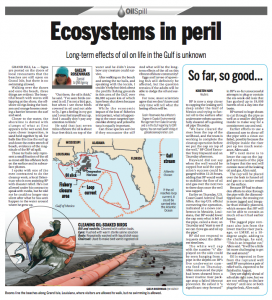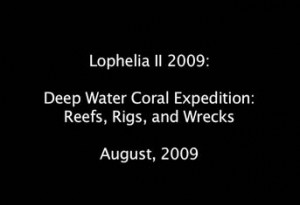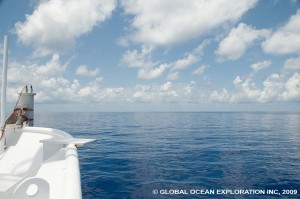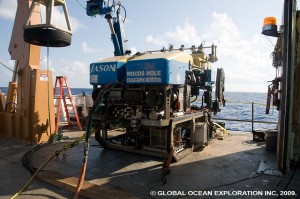.

.
After twenty hours of bottom time, the Jason II ROV surfaced filled with samples. Perhaps one of the most interesting things about these samples is that they were collected individually so there is video of the collection and the scientists in the control van knew what was in every container. It is a fantastic way to sample because in the past, destructive trawls were used to study the deep sea. The trawl would go along the bottom and collect everything and anything in its path. The entire deployment could be watched throughout the ship on the TVs so we all had a good feel for the site. Very cool stuff…big fish, crabs, squid, squat lobsters, and many types of both hard and soft coral were observed. It is incredible to see these animals interacting in their habitat. Corals become habitat for other animals and with the cameras on Jason, we can observe this behavior and interaction. Brittle stars wrap themselves around soft corals, gargonians. Crinoids, feather stars, find their homes on the corals as well. The focus of this cruise is the Lophelia coral, a beautiful white coral with enormous polyps, well for coral enormous. The Lophelia creates habitat for many small critters.
.
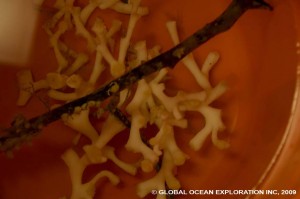
A sample of Lophelia, our target species
.
So with a successful mission, Jason came back on board and it was time to preserve and record all of the samples. I got an up close look at many of the animals which was very cool. I am struck by the scale of the cameras on Jason. Everything looks so huge in the cameras but most everything is relatively small, at least in this area on the West Florida Shelf. I am looking forward to the dives at all of the other sites to see what is different and what we find.
.

.

A squat lobster
.
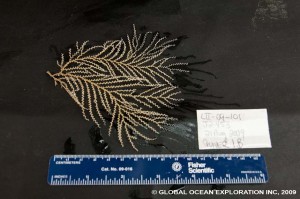
.
As soon as Jason came up and all of the other navigation instruments were on board, we headed north to our next station…the steam should be about seventeen hours.
.




